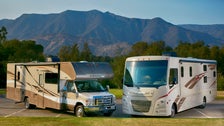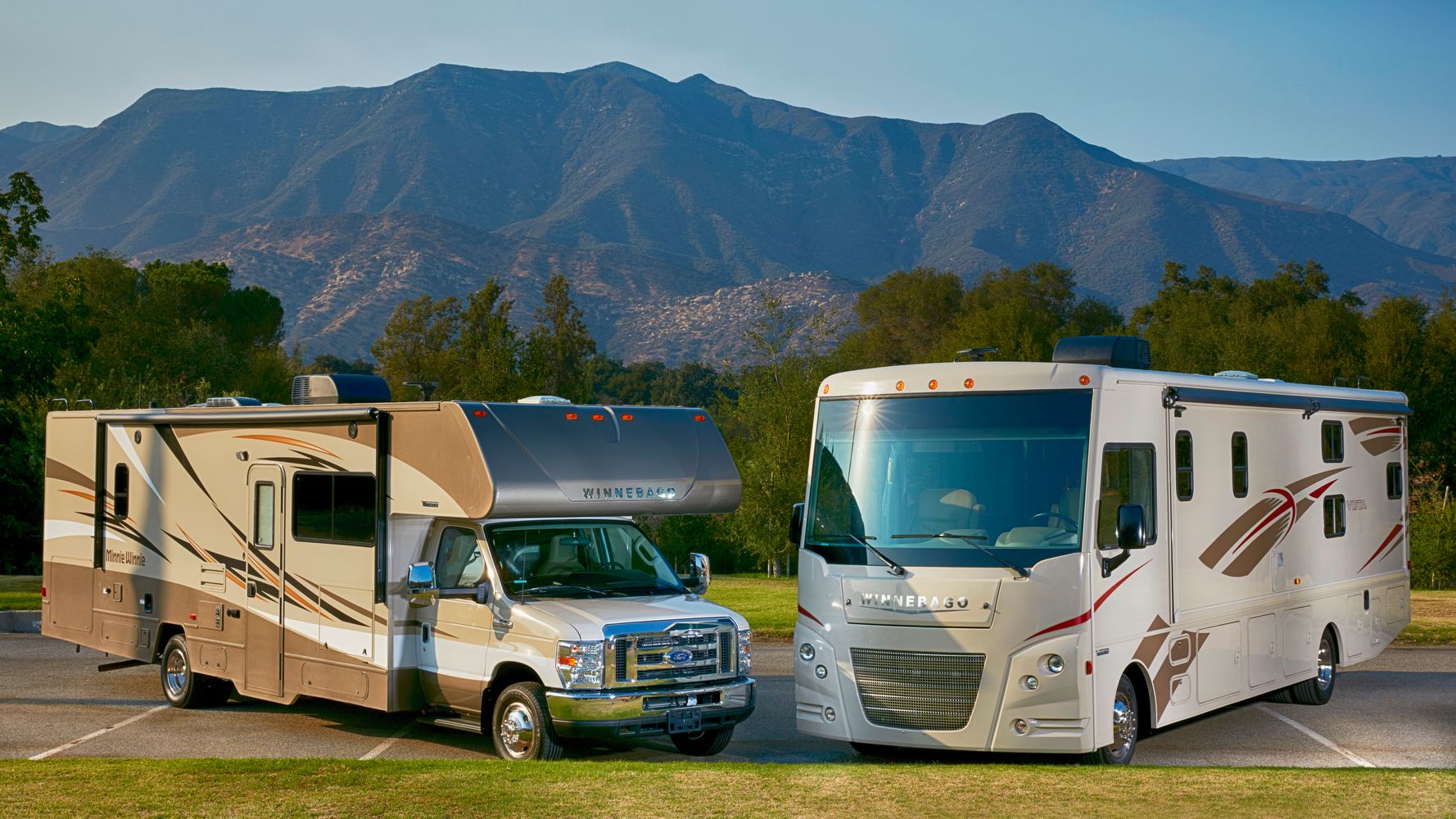[ad_1]

If the coronavirus has you going stir-crazy, there’s a good chance you’ve thought about renting or buying an RV and taking a road trip. After all, an RV allows you to travel without exposing yourself to germy airports and hotels.
You wouldn’t be the only person to come up with that idea. In May, peer-to-peer rental service RVshare saw a 650% spike in bookings since the beginning of April.
But if you’re a first-time RV driver, there can be a steep learning curve to overcome. Before you hit the open road, make sure you don’t make one of these major first-timer mistakes.
1. Believing bigger is better
Considering that you’ll be spending a good amount of time in your RV, you want to be comfortable. Choosing something too small will make traveling feel claustrophobic. But that doesn’t mean you should buy the biggest RV you can.
“The mistake I made was thinking I needed more space than we actually needed,” said Angela M. DiLoreto, who travels nearly full time in her travel trailer and blogs with her husband at Fitting in Adventure. “People compare the space to their houses; we spend a lot of time in the four walls of our home but little time inside the walls of an RV.” However, she said, the RV experience is about what happens outside those walls.
A smaller vehicle will be easier to drive and park, as well as faster to set up and tear down. Plus, many national parks have length restrictions for camping, so keep this in mind when choosing the size of your RV.
2. Buying brand spanking new
If you’re buying your RV, it might be tempting to lean toward the security of buying brand new. After all, new cars are in great shape and ready to roll, so you might presume RVs are, too.
“This isn’t true in RVing, unfortunately,” said Georgianne Austin, communications director for Escapees RV Club. Common advice shared in RVing circles, she said, is that it’s best to buy an RV that’s at least two years old. “The idea behind this is to let someone else deal with the fresh-off-the-lot issues, such as interior construction problems, chassis problems, etc., which surface during the first real ride with the RV.” This is often referred to as the “shakedown” trip.
By purchasing a used RV, someone else has already dealt with those issues that arise with the first few trips and has hopefully had them fixed by the time you take over.
3. Failing to check the carrying capacity
Because RVs are big, you might think that they can easily haul whatever you can fit inside. And you might believe that the bigger the RV, the more it can tow. Those are misconceptions that can cost you, said Kimberly Button, co-editor of Couch Potato Camping. “All RVs are different, based on their designs, but they are only designed to safely carry a certain amount of weight, which is known as gross cargo carrying capacity.”
Cargo carrying capacities can range from just a few hundred pounds to several thousand pounds. Either way, that limit includes personal items (shoes, clothing, sports gear, etc.), food, water (including fresh, gray and black tanks), updates or additions to the RV (solar panels, TVs, etc.) and passengers.
Button warned that carrying more than that capacity could damage your RV or trailer, tow vehicle or both. “It is extremely important for RV buyers to consider how they are going to camp and how many people they will be bringing.”
4. Not considering what your tow vehicle can handle
Another mistake, specifically for those looking at travel trailers, is purchasing a camper too heavy for the towing capacity of their vehicle, according to Rosanna T. Mitchell, founder of outdoor family adventure site A Pragmatic Lens. “Horror stories abound of RV dealers and sales associates assuring customers that their vehicle is able to tow a camper weighing thousands of pounds only to realize later they need a new towing vehicle, or worse, get in an accident,” she said.
If you plan to buy a trailer, be sure that your existing vehicle is equipped to tow the weight. If not, you may need to budget for a new towing vehicle or consider a different type of RV.
5. Traveling with too many aftermarket modifications
Especially with the explosion of the “van life” movement, many RV owners are making aftermarket modifications to their vehicles to make them more livable and aesthetically pleasing.
However, you should be wary of purchasing an RV with modifications such as high roofs or different passenger and driver seats, said Tina Willis, a personal injury attorney in Orlando, Florida, who’s owned an RV for about five years.
“The reason is that these aftermarket changes very often aren’t nearly as safe as those tested and engineered by the original vehicle manufacturer,” she said. For example, removing the original roof from a van and adding a new high top eliminates the metal support beams that surround the occupants. Plus, many extended vans already have a higher rollover risk, and making them taller adds to that risk.
It can be tempting to buy something that looks like it drove right off an influencer’s Instagram feed, but safety should be the priority when choosing a vehicle.
6. Picking a poor floor plan
Rae Miller, blogger at the Getaway Couple, said it’s important for first-time renters or buyers to really think about the floor plan they want. For instance, are you a family that needs separate areas for the kids? Are you bringing any large toys along? Do you like the open concept or do you want distinct living areas?
Some newer RV models also have retractable slides that will affect how accessible the interior is while driving. “The number one question we tell first-time buyers to ask themselves is: Can you access the bedroom, bathroom and fridge with the slides in? You’d be surprised how many times you’ll want to access these areas with the slides retracted when traveling, so make sure they aren’t blocked,” Miller said.
7. Assuming you’ll get it perfect the first time
Becca Borawski Jenkins, a senior editor at FinanceBuzz who’s been a full-time RVer for over three years, said she knows few people who are still driving the first RV they purchased. “Most are on their second or third, and some have gone through even more than that.”
Why? It takes time and experience to truly understand what you want and need in an RV. And that’s OK. Jenkins said realizing you won’t buy the perfect RV the first time is a good thing, as it relieves some of the pressure when choosing a vehicle to invest in. “You’ll probably buy one that turns out to be too big or too small or doesn’t feature an amenity you later realize is essential to your camping happiness,” she said.
The most important thing is to not break the bank on your first choice. “If you don’t spend a fortune your first time out, then you can trade your first RV in and get the RV of your dreams the second time around.”
[ad_2]
Source


